Economics
America’s trust in its institutions has collapsed
Published
1 month agoon
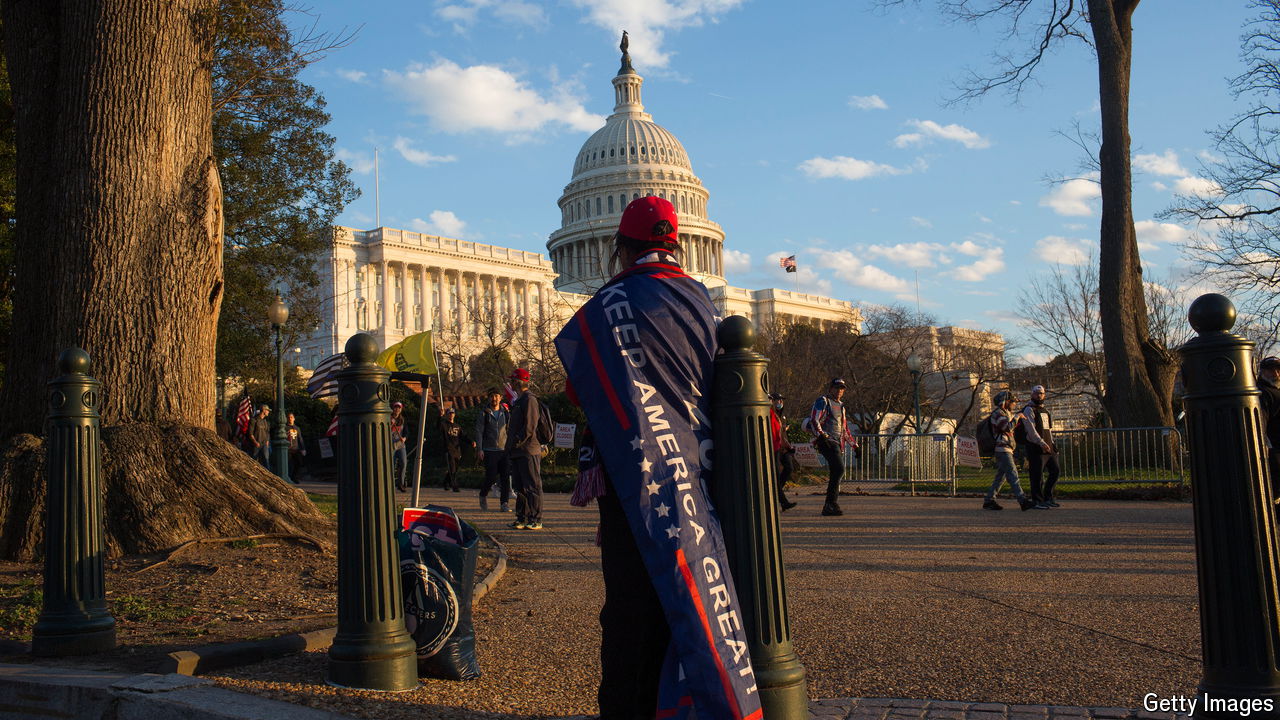
AS FAR AS stereotypes go, brash national self-confidence has long been a defining feature of how Americans are viewed abroad. In 2006, when Gallup first started asking Americans about their trust in key institutions, the country ranked at the top of the G7 league table, tied with Britain. In 2023, for the first time, America came last.

New data from Gallup show that American trust in several national institutions is on the decline. That may not be surprising, given the fraught state of the country’s politics, but the cumulative fall over the years is startling (see chart). Twenty years ago Americans had the highest confidence in their national government of people in any G7 country. Today they have the lowest. Americans are tied with Italians in having the lowest trust in the judicial system, and come last in faith in honest elections. Even the army is suffering from a dip. Although still high at 81%, American trust in its armed forces is now lower than at any point since 2006, and—gasp—lower than in France.
The reasons behind this crisis of confidence in the self-declared greatest country on Earth are varied. The roots of a (healthy) scepticism of government can be traced back to the Vietnam war and the Watergate scandal of the early 1970s. The gradual dying out of the Greatest Generation, which had significantly higher institutional trust than later generations, also plays a role. However, more recent developments help explain the sharp decline of the past years.
Donald Trump’s “constant barrage” of unfounded accusations about the 2020 presidential election clearly plays a big role in Americans’ low trust in the electoral system, says Henry Brady of the University of California, Berkeley. This no doubt also contributes to growing distrust of the judiciary—just last week Mr Trump called the criminal “hush money” trial against him “a communist show trial”. But few things seem to have done more to directly erode trust in the judiciary than the Supreme Court’s decision in 2022 to overturn Roe v Wade. Before this ruling removing a constitutional right to abortion in America, Democrats and Republicans trusted the court in roughly equal measure; afterwards, confidence among Democrats dropped through the floor.
The divergence with Britain is especially striking. Whereas British confidence in the country’s judiciary and electoral system is higher than at any point in the history of the survey, America has moved in the opposite direction. Some 70% of Britons now say that they have confidence in the honesty of elections, compared with only 44% of Americans.
“Like America, the UK has seen a pretty steady decline in confidence in national government,” observes Benedict Vigers, from Gallup, “but this more core belief in the foundation of the democratic system and in fair elections is still pretty strong.” The same cannot now be said about America. Even within the broader OECD club of mostly rich democracies, only Hungary, Turkey and Colombia have less trust in honest elections.
Yet more than the loss of trust overall, what really worries Mr Brady is the increased polarisation of trust in America. Having some institutions that Democrats trust more (journalism, higher education, science) and others that Republicans trust more (religion, the armed forces and the police) is a matter of concern, particularly for the institutions themselves. The problem is even starker when the workforces of such institutions become increasingly homogenous, something that has happened in predominantly progressive higher education as well as in the predominantly conservative military services.
Strong and credible institutions count among the best guarantors of a country’s long-term stability. People who broadly trust authority are more likely to comply with government directives, such as filing their tax returns. During the pandemic, people who had high trust in government were more likely to get vaccinated and comply with public-health guidance on lockdowns or social-distancing rules, according to a meta-analysis by Daniel Devine of the University of Southampton and colleagues. Blind trust in authority is dangerous, and a degree of scepticism can be healthy. But America’s slide towards becoming an ever more distrusting place has perils of its own. ■
You may like
-
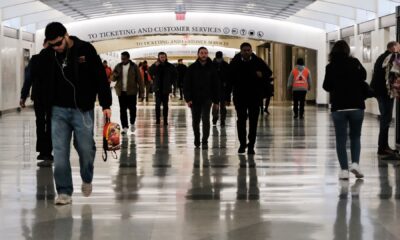

Immigrant workers are helping boost the U.S. labor market
-
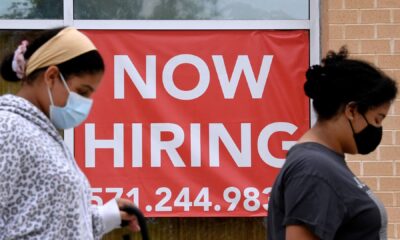

Jobless rates rise in April for all race groups except Black Americans
-


Why the Biden administration is rushing to produce regulations
-
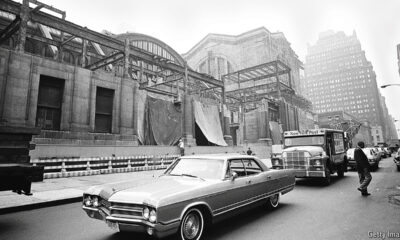

Seaport Tower shows New York’s fight between housing and heritage
-


A surprising Japanese presence in a traditional American craft
-
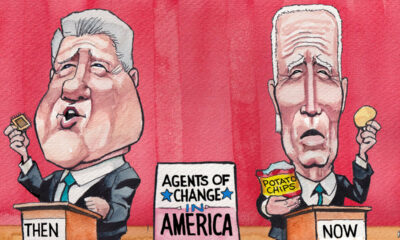

Joe Biden is practising some Clintonian politics
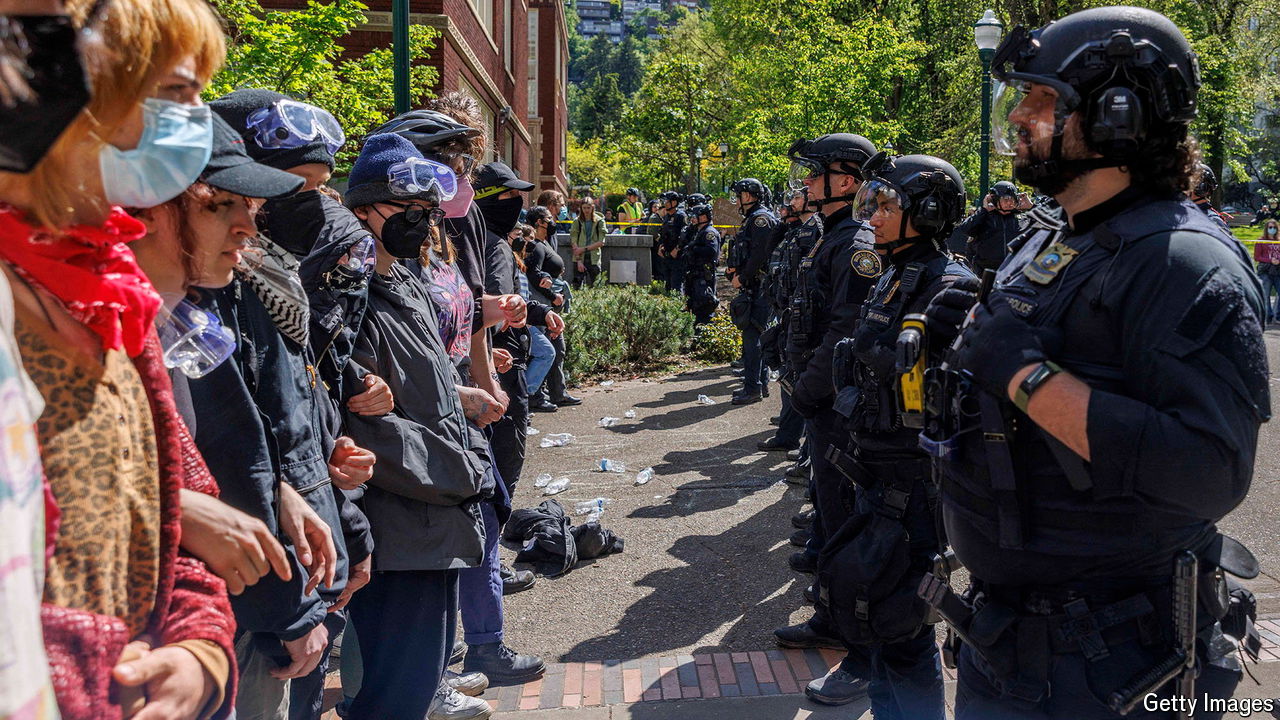
This is the introduction to Checks and Balance, a weekly, subscriber-only newsletter bringing exclusive insight from our correspondents in America.
Sign up for Checks and Balance.
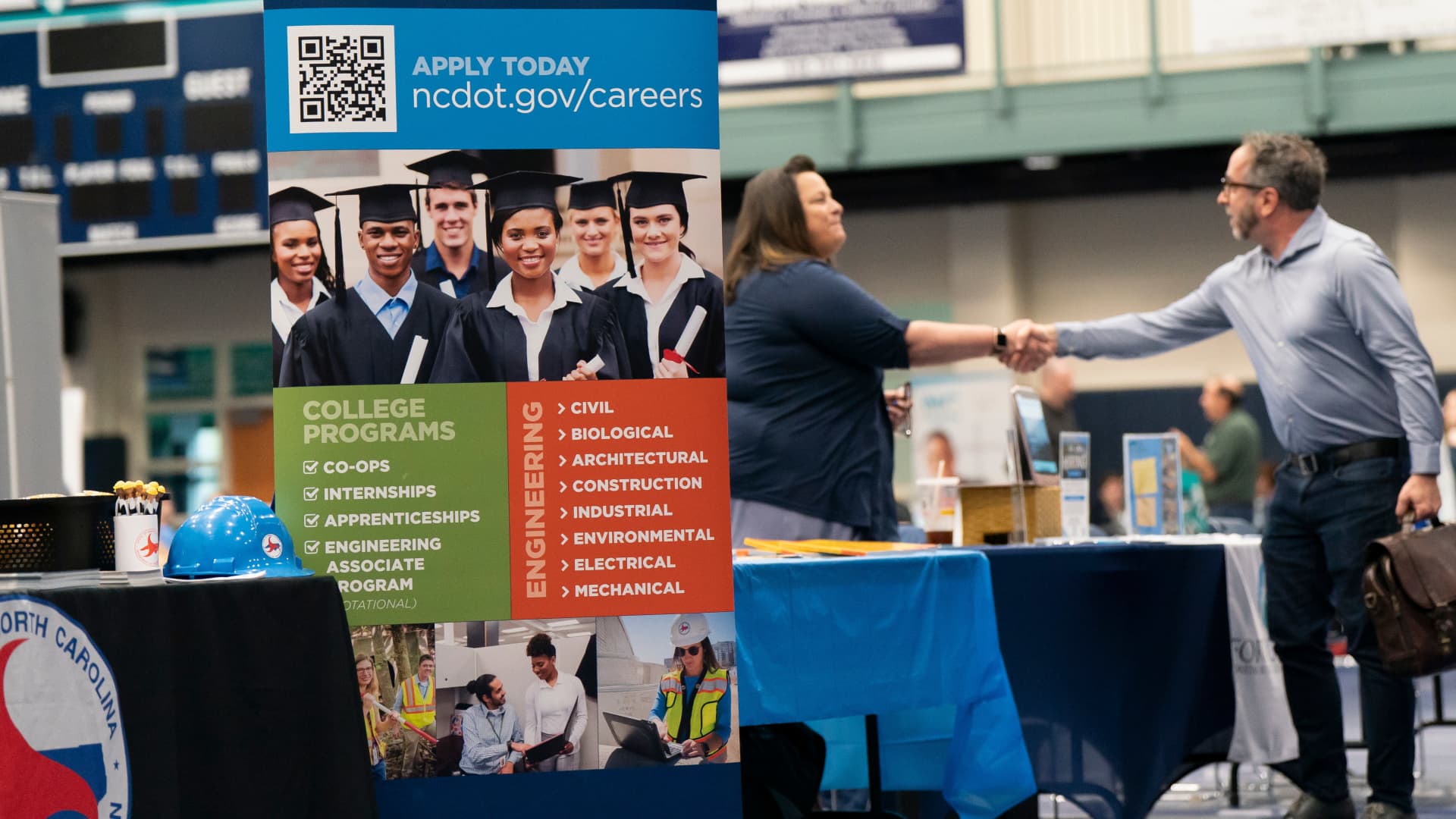
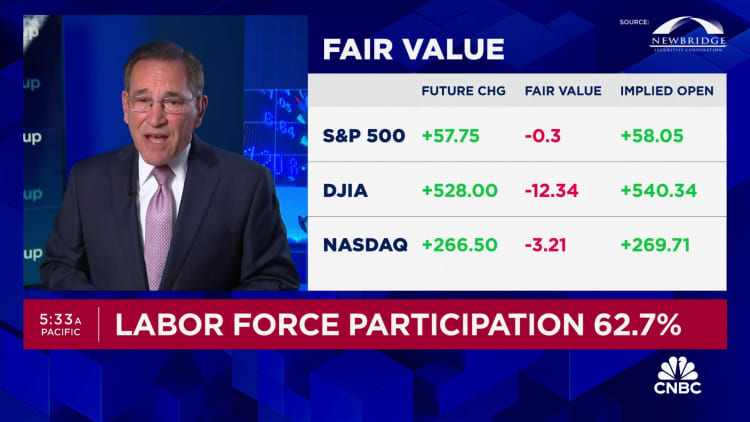
The U.S. economy added fewer jobs than expected in April while the unemployment rate rose, lifting hopes that the Federal Reserve will be able to cut interest rates in the coming months.
Nonfarm payrolls increased by 175,000 on the month, below the 240,000 estimate from the Dow Jones consensus, the Labor Department’s Bureau of Labor Statistics reported Friday. The unemployment rate ticked higher to 3.9% against expectations it would hold steady at 3.8%.
Average hourly earnings rose 0.2% from the previous month and 3.9% from a year ago, both below consensus estimates and an encouraging sign for inflation.
The jobless rate tied for the highest level since January 2022. A more encompassing rate that includes discouraged workers and those holding part-time jobs for economic reasons also edged up, to 7.4%, its highest level since November 2021. The labor force participation rate, or those actively looking for work, was unchanged at 62.7%.
Wall Street already had been poised for a higher open, and futures tied to major stock market averages added to gains following the report. Treasury yields tumbled after being little changed before the release. The report raised the prospect of a “Goldilocks” climate where growth continues but not at such a rapid pace to force the Fed to tighten policy further.
“With this report, the porridge was just about right,” said Dan North, senior economist at Allianz Trade. “What would you like at this point the cycle? We’ve had interest rates jacked up pretty high, so you would expect to see the labor market slow down a little. But we’re still at pretty high levels.”
Consistent with recent trends, health care led job creation, with a 56,000 increase.
Other sectors showing significant rises included social assistance (31,000), transportation and warehousing (22,000), and retail (20,000). Construction added 9,000 positions while government, which had shown solid gains in recent months, was up just 8,000 after averaging 55,000 over the previous 12 months.
Revisions to previous months took the March gain to 315,000, or 12,000 from the initial estimate, and February to 236,000, a decline of 34,000.
Household employment, which is used to calculate the unemployment rate, increased by just 25,000 on the month. Workers holding full-time jobs soared by 949,000 on the month, while those hold part-time jobs slumped by 914,000.
The report comes two days after the Fed again voted to hold borrowing costs steady, keeping its benchmark overnight borrowing rate in a targeted range between 5.25%-5.5%, the highest in more than 20 years.
Following the decision, Chair Jerome Powell characterized the jobs market as “strong” but noted that inflation is “too high” and this year’s economic data has indicated “a lack of further progress” in getting inflation back to the Fed’s 2% target.
But market action shifted after the jobs report indicated an easing labor market and softer wage increases. Traders priced in a strong chance of two interest rate cuts by the end of 2024, with the first reduction expected to come in September, according to CME Group data.
“This is the jobs report the Fed would have scripted,” said Seema Shah, chief global strategist at Principal Asset Management. “The first downside payrolls surprise in several months, as well as the dip in average hourly earnings growth, will bring the rate cutting dialogue back into the market and perhaps explains why Powell was able to be dovish on Wednesday.”
Though inflation has come well off its highs in mid-2022, it is still considerably above the central bank’s comfort zone. Most reports this year have shown inflation around 3% annually; the Fed’s own preferred measure, the core personal consumption expenditures price index, most recently was at 2.8%.
Higher prices have been putting upward pressure on wages, part of an inflation picture that has kept the Fed on the sidelines despite widespread market expectations that the central bank would be cutting interest rates aggressively this year.
Most Fed officials in fact had been mentioning the likelihood of reductions in their public comments. However, Powell at his post-meeting news conference Wednesday made no mention of the likelihood that rates would be lowered at some point this year, as he had in the past.
Don’t miss these exclusives from CNBC PRO
Economics
Immigrant workers are helping boost the U.S. labor market
Published
2 weeks agoon
May 4, 2024
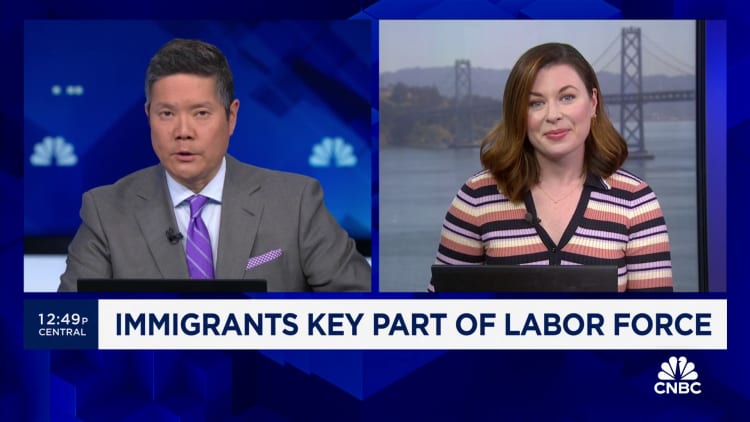
The strong jobs market has been bolstered post-pandemic by strength in the immigrant workforce in America. And as Americans age out of the labor force and birth rates remain low, economists and the Federal Reserve are touting the importance of immigrant workers for overall future economic growth.
Immigrant workers made up 18.6% of the workforce last year, a new record, according to Bureau of Labor Statistics data. Workers are taking open positions in agriculture, technology and health care, fields where labor supply has been a challenge for those looking to hire.
Despite the U.S. adding fewer-than-expected jobs in April, the labor force participation rate for foreign-born workers ticked up slightly, to 66%.
“We don’t have enough workers participating in the labor force and our birth rate has dropped down 2% last year from 2022 to 2023. … These folks are not taking jobs. They are helping to bolster and helping us build back — they’re adding needed workers to the labor force,” said Jennie Murray, CEO of the National Immigration Forum, a nonpartisan nonprofit advocacy organization.
The influx of immigrant workers is also a projected boost to U.S. output, and is expected to grow gross domestic product over the next decade by $7 trillion, Congressional Budget Office Director Phillip Swagel noted in a February statement accompanying the 2024-2034 CBO outlook.
“The labor force in 2033 is larger by 5.2 million people, mostly because of higher net immigration. As a result of those changes in the labor force, we estimate that, from 2023 to 2034, GDP will be greater by about $7 trillion and revenues will be greater by about $1 trillion than they would have been otherwise. We are continuing to assess the implications of immigration for revenues and spending,” Swagel wrote.
‘Huge competition’
Goodwin Living, a nonprofit faith-based elder-care facility in Northern Virginia that cares for 2,500 adults day to day, is heavily reliant on immigrant workers. Some 40% of its 1,200 workers are foreign-born, representing 65 countries, according to CEO Rob Liebreich, and more workers will be needed to fill increasing gaps as Americans age and need assistance.
“About 70% of 65-year-olds are expected to need long-term care in the future. We need a lot of hands to support those needs,” Liebreich told CNBC. “Right now, one of the best ways that we see to find that is through people coming from other countries, our global talent, and there’s a huge competition for them.”
In 2018, Goodwin launched a citizenship program, which provides financial resources, mentorship and tutoring for workers looking to obtain U.S. citizenship. So far, 160 workers and 25 of their family members have either obtained citizenship or are in the process of doing so through Goodwin.
Wilner Vialer, 35, began working at Goodwin four years ago and serves as an environmental services team lead, setting up and cleaning rooms. Vialer, who came to the U.S. 13 years ago from Haiti, lost his job during the pandemic and was given an opportunity at Goodwin because his mother had been employed at the facility.
He applied for U.S. citizenship before getting his current job, but after he worked there for six months, the Goodwin Living Foundation covered his application fee of $725, the nonprofit said. Vialer became a U.S. citizen in 2021, and his 15-year-old daughter received a citizenship grant and became a U.S. citizen in 2023.
Vialer’s hope is to have his wife join the family from Haiti, as they have been separated for six years.
“This program is a good opportunity,” Vialer said. “They help me, I have a family back home. … This job really [does] support me when I get my paycheck to help them back home.”
Workers are not required to stay with Goodwin after becoming U.S. citizens, but those who do stay are there 20% longer than those who do not participate in the program, Liebreich said. Speeding up the path to citizenship is key to remaining competitive in a global economy, he added.
“If we want to attract and retain this global workforce, which we desperately need, we need to make the process a lot easier,” Liebreich said.
Looking ahead to November, immigration will be a hot topic on the presidential campaign trail and for voters. Both President Joe Biden and former President Donald Trump have made trips to the southern border in recent months to address the large number of migrants entering the country.

Betting on the Kentucky Derby? Here’s how to think like a professional handicapper.

Warren Buffett says Greg Abel will make Berkshire Hathaway investing decisions when he’s gone

EV makers win 2-year extension to qualify for tax credits

Are American progressives making themselves sad?

‘Best Firms for Tech’ 2024 deadline extended to April 10

